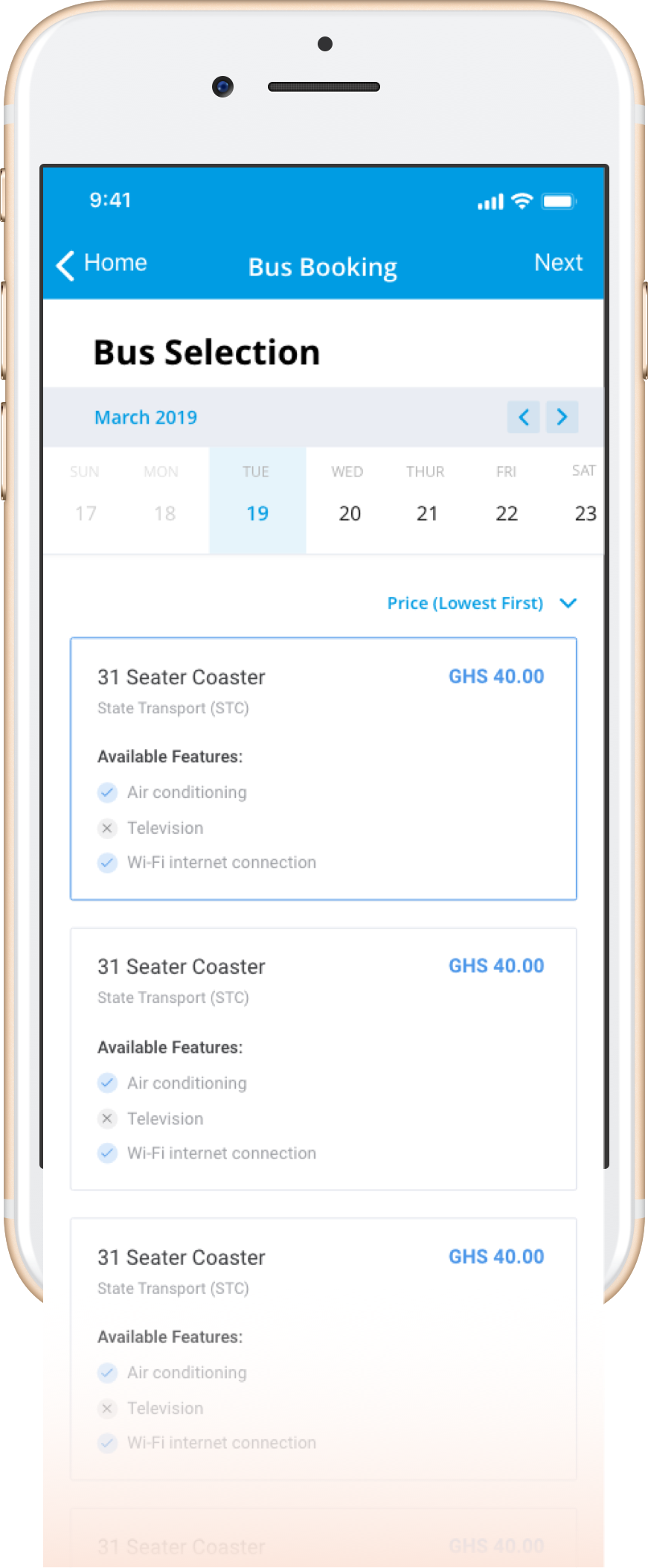Making Intercity Transit More Accessible
Client
Whitewind Company Ltd.
Role(s)
Product Designer
Date
April 2019 - June 2019
Brief
Travel by road is the most used mode of getting from one city in Ghana to another. Only a few people use airlines to go from the South to the North and vice versa because although more convenient than commuter coaches, it's more expensive and trips are less frequent. A lot of the convenience has less to do with the actual modes of transport and more to do with the processes of organising a trip. Local airlines allow customers to book tickets online and with agencies, and in advance, and are able to communicate dates and times clearly. However, with the major road transport companies, booking is typically done at the station and seats are assigned on a first come first serve basis.
As a product designer, my role was to design an application that helped travellers book tickets with their preferred companies from the convenience of their devices.

Above is a variety of screens from the Transport Booking app.
Key Challenges
1. Managing the transition from paper-based booking to on-screen booking:
In bringing a very manual set of processes to mobile and the web, one key consideration was change management. Our target users comprise people who use their phones for very basic activities, calls and messaging. To ensure the booking solution we provided was useful, our aim was to keep it clear and simple to use. Trying to bring actions typically performed at bus terminals by different actors to a single mobile phone meant there was the tendency to overwhelm. A few ways this influenced the app's designs were:
- Breaking down the booking process for each step to stand alone. This meant the process seemed longer, but each request for information was focussed and guided.
- Introducing a feature to allow one user to book a ticket on behalf of others. We are riding on tech-savvy-champions in a travel party to drive acceptance.
2. Facilitating Efficient Decision Making:
For there to be any real benefits of booking via this app, users have to be able to make smarter decisions. For us, this meant providing users with the control to make the right choices. So for example, in the booking flow, for each date selected, a user can see all the options available, the prices, features, and sort by cost. If successful, this feature would enable users get value for their money. In doing so, I designed a date widget that allowed users to quickly check out busses available on different dates without having to break the flow.

Above is a screen of the booking process: selecting available busses on a chosen day.
3. Joining a Trip En-route:
In the spirit of providing value for money, we were also determined to save travellers time and money. If travellers no longer needed to go to bus stations to buy tickets, we wanted to allow them to join the trip at a pick-up point closest to where they were. Instead of using a map, to maintain simplicity, we opted to use highways and known landmarks for joining a trip en-route. This assured the app used less mobile data and that there wasn't confusion over where to join a bus.
Above is a video of the section of the booking form that allows you to join the trip enroute.
Last Words
In addition to designing the mobile experience there was a web app with similar features. Also, there was a feature for private rental of busses. The biggest challenge in this project was maintaining simplicity in meeting the growing list of requirements from stakeholders.